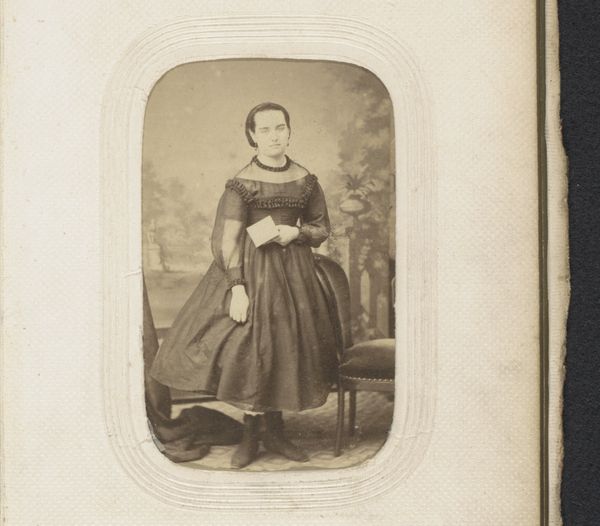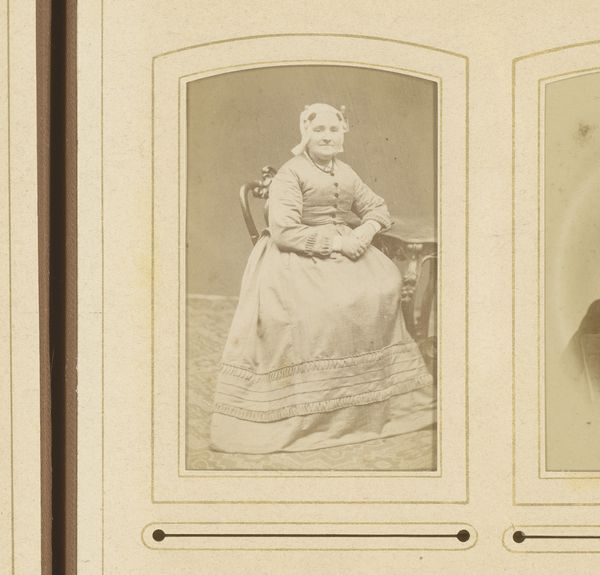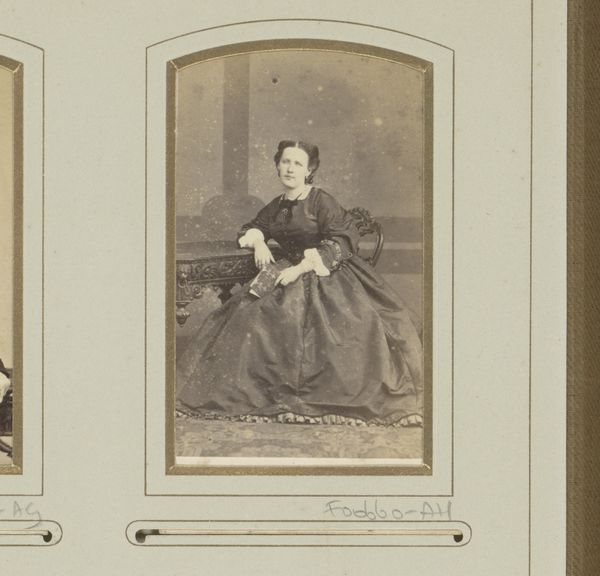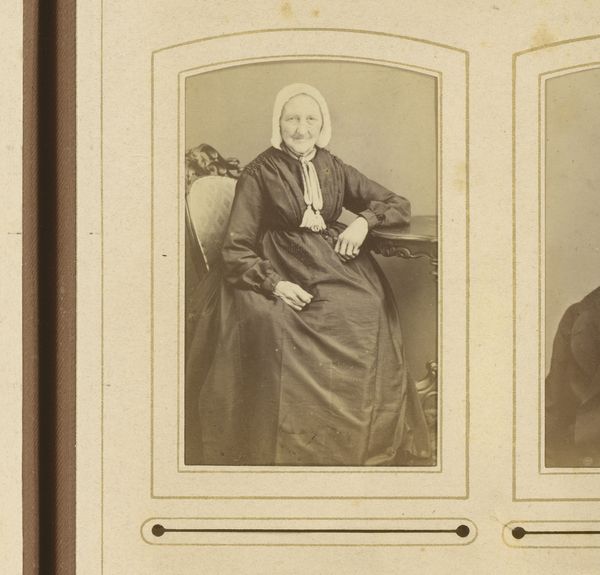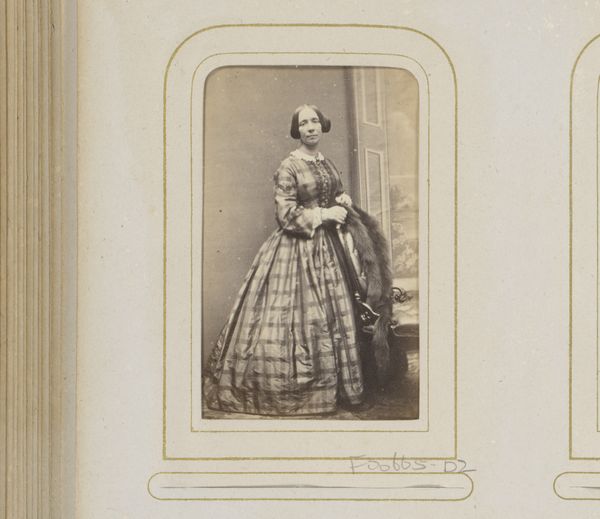
photography
#
portrait
#
photography
#
19th century
#
realism
Dimensions: height 85 mm, width 53 mm
Copyright: Rijks Museum: Open Domain
Curator: This photograph, titled “Portret van een staande vrouw, leunend op de leuning van een stoel,” dates from around 1866 to 1875 and it's by H.C. Donk en Co. What grabs your attention? Editor: I'm immediately struck by the materiality. The photographic print itself, and the woman’s dress, the way it's captured... you can almost feel the weight of the fabric. How would you approach it? Curator: For me, it's all about the processes at play. Think about the labor involved in creating both the dress and the photograph itself. The dress signifies the era's fashion industry, its intricate craftsmanship representing many hours of labor. Consider the photographic process: the collodion process to produce the negative, printing to albumen paper. What does it say about material production and social status? Editor: So you’re focusing on the production, and the societal implications... Do you mean how the rise of photography, enabled broader access to portraiture? It democratized representation compared to painted portraits? Curator: Precisely! This wasn't just about likeness, it was about participating in a specific social ritual. How does this "snapshot" affect the production of personal memory in that time? Editor: I see, the intersection of material, process, and social context is so important here. Before, I was only noticing the visual representation of the subject, and wasn't taking into consideration the wider aspects surrounding it! Curator: It really makes you think about the societal shift and how material production and labour shape that moment, right? A shift accessible even through the creation of a portrait like this one. Editor: Absolutely! Looking at this now, I wonder who the makers of her clothes and the components of the photograph were. Thank you, it’s fascinating to view the image from such a grounded perspective.
Comments
No comments
Be the first to comment and join the conversation on the ultimate creative platform.
